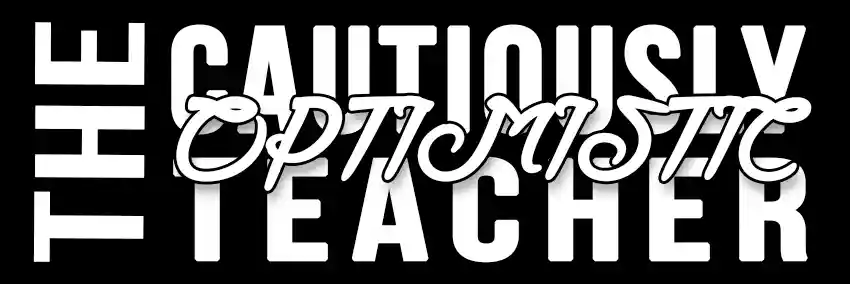Classroom Management Talk: Interview Strategies for Teachers
Classroom management is a cornerstone of effective teaching. It encompasses a wide range of skills and strategies employed by educators to create a productive, respectful, and engaging learning environment. Good classroom management not only facilitates a better learning experience for students but also reflects the teacher’s ability to handle diverse classroom dynamics. It involves establishing clear expectations, managing behaviors, fostering a positive atmosphere, and ensuring that each student feels valued and understood.
In the context of teacher interviews, the ability to articulate a clear and effective classroom management strategy is paramount. Prospective employers often gauge a teacher’s potential through their understanding and approach to classroom management. These discussions go beyond theoretical knowledge; they delve into practical applications and personal experiences. Demonstrating a well-thought-out approach to managing a classroom can set candidates apart and showcase their readiness to handle the day-to-day challenges of teaching.
Interviewers are interested in understanding how a teacher plans to maintain order, engage students, and foster a safe and conducive learning environment. A teacher’s classroom management philosophy often mirrors their teaching philosophy, giving insight into their values, priorities, and methods. Thus, discussing classroom management in an interview is not just about sharing strategies, but it’s also about reflecting one’s identity as an educator. It’s an opportunity for teachers to illustrate how they can positively influence their students’ academic and personal growth while maintaining a structured, dynamic classroom setting.
Understanding Classroom Management
Classroom management refers to the techniques and skills used by teachers to ensure that classroom activities run smoothly, students remain engaged, and a positive learning environment is maintained. It goes beyond merely maintaining discipline; it involves creating a nurturing educational environment where students can thrive academically and socially.
Key Elements of Effective Classroom Management
Establishing Clear Expectations: Effective classroom management starts with setting clear, consistent, and achievable expectations for student behavior and learning. These expectations should be communicated from the outset and reinforced regularly.
Building Relationships: A successful classroom hinges on the relationship between teacher and students. Establishing trust and respect fosters a more positive and cooperative classroom environment.
Consistent Enforcement of Rules: Consistency in applying rules and consequences is crucial. This consistency helps create a sense of fairness and security in the classroom.
Engagement and Motivation: Keeping students engaged through interactive and relevant content reduces behavioral issues. Motivation can be fostered by recognizing student achievements and setting attainable goals.
Adaptability: A skilled teacher must be able to adapt their management strategies to suit different students and situations, recognizing that what works for one class or student might not work for another.
Cultural Awareness and Inclusivity: Understanding and respecting the diverse backgrounds and needs of students is key to creating an inclusive environment where all students feel valued and supported.
For more about classroom management strategies for new teachers, click here.
Preparing for the Interview: Knowing Your Philosophy

Preparation for an interview should include a deep reflection on your personal classroom management style.
Identifying Your Classroom Management Style
Self-Assessment: Reflect on your values, beliefs, and what you think works best in a classroom. Are you more authoritative, or do you prefer a more democratic approach?
Research and Theories: Familiarize yourself with various classroom management theories and models, such as Harry Wong’s “The First Days of School” or Fred Jones’ “Positive Classroom Discipline.” Understanding these can help you define your own style.
Personalization: Your style should reflect your personality and teaching philosophy. It’s important to be authentic; students respond best to genuine interactions and management styles.
Reflecting on Past Experiences and Learning
Analyzing Past Classroom Experiences: Think back to specific instances where your management approach was effective or needed improvement. What worked? What didn’t? Why?
Learning from Others: Observing peers, mentors, or recalling previous teachers can provide valuable insights into different management styles.
Continuous Improvement: Recognize that your classroom management style should evolve based on new experiences, training, and feedback. Reflecting on this continual growth process can be a compelling discussion point in interviews.
By understanding the nuances of classroom management and reflecting deeply on your personal approach and experiences, you can confidently articulate a philosophy that not only resonates with your interviewers but also genuinely represents your teaching style.
Articulating Your Classroom Management Strategy
Effectively conveying your classroom management strategy during an interview is crucial. Here are some tips to help you articulate your approach clearly and compellingly.
Tips for Clearly Expressing Your Approach
Structured Response: Organize your thoughts in a clear, logical manner. Start by describing your overall philosophy, then delve into specific strategies and examples.
Use of Clear Language: Avoid educational jargon or overly complex language. Speak plainly about your strategies, making them easy for interviewers to understand and visualize.
Confidence and Enthusiasm: Your passion for teaching and managing a classroom should come through in your words. Speak confidently about your approach, showing that you believe in its effectiveness.
The Importance of Being Specific and Honest
Tailored Examples: Offer specific examples from your experience that illustrate how you’ve implemented your management strategies. This specificity adds credibility and depth to your approach.
Honest Reflection: It’s okay to acknowledge challenges or past mistakes, as long as you also discuss how you’ve learned from them. This honesty can demonstrate your growth mindset and resilience.
Alignment with School Philosophy: Ensure that your approach aligns with the school’s philosophy or mission. If there are differences, be honest but also show willingness to adapt and learn.
Incorporating Educational Theories and Personal Experiences

Theory Application: Reference educational theories or models that have influenced your approach, explaining how they manifest in your classroom management style.
Personal Anecdotes: Share stories from your teaching career that demonstrate how you’ve applied these theories in real-world scenarios. This blend of theory and practice can be very persuasive.
Common Classroom Management Techniques
An understanding of various classroom management techniques can help you develop a comprehensive strategy.
Overview of Popular Strategies
Positive Reinforcement: Using praise and rewards to encourage good behavior. This approach focuses on highlighting and rewarding positive behaviors rather than punishing negative ones.
Clear Rules and Expectations: Establishing and communicating clear rules and expectations from the beginning. Consistency in enforcing these rules is key to maintaining order and respect.
Consistent Consequences: Applying fair and consistent consequences for rule-breaking. This helps students understand the implications of their actions and maintains a sense of justice in the classroom.
Adapting Strategies to Different Age Groups and Learning Environments
Age Appropriateness: Tailor your techniques to be age-appropriate. Younger students may need more concrete rules and rewards, while older students may respond better to discussions and self-regulation strategies.
Cultural and Environmental Sensitivity: Consider the cultural and socioeconomic background of your students. Strategies should be inclusive and respectful of diverse backgrounds.
Flexibility in Approach: Be prepared to adapt your strategies to different classroom settings and dynamics. What works in one environment may not work in another.
By articulating your classroom management strategy effectively and understanding common techniques, you can demonstrate to interviewers that you are not only knowledgeable but also adaptable and reflective in your approach to classroom management. This can greatly enhance your prospects in securing a teaching position.
Providing Real-world Examples
Using real-world examples is a powerful way to illustrate your classroom management strategies. These examples can bring your approach to life, making it easier for interviewers to understand and appreciate your methods.
How to Use Storytelling to Illustrate Your Strategies
Engaging Narrative: Craft your examples as short stories. Describe the situation, the action you took, and the outcome. This narrative style helps interviewers visualize your approach in action.
Relevant Details: Include specific details that highlight key aspects of your strategy. For example, if you use positive reinforcement, describe how you implemented a reward system and its impact on student behavior.
Emotional Connection: Aim to connect emotionally with your audience. Share moments of success or challenge that demonstrate your passion and dedication as a teacher.
The Impact of Examples on Interviewers
Demonstrating Competence: Concrete examples show that you not only understand classroom management theories but can also apply them effectively in real-life situations.
Building Trust: When you share genuine experiences, it builds trust. Interviewers are more likely to believe in your capabilities when they hear about your real-world successes and learning moments.
Showcasing Adaptability: By discussing various situations, you can demonstrate your ability to adapt your strategies to meet different needs and challenges.
Tailoring Examples to the Prospective School’s Environment and Culture
Research the School: Understand the school’s ethos, values, and demographic makeup. This knowledge will help you choose examples that resonate with the school’s environment.
Addressing Relevant Issues: If the school faces particular challenges, such as high absenteeism or diversity issues, present examples that show how you’ve successfully managed similar situations.
Aligning with School Values: Ensure your examples align with the school’s values and teaching philosophy. This demonstrates your compatibility with the school’s culture.
Answering Challenging Questions

Being prepared for challenging questions about classroom management can significantly boost your confidence during an interview.
Typical Interview Questions About Classroom Management
- “Can you describe a challenging classroom situation and how you handled it?”
- “How do you motivate students who seem disinterested?”
- “What strategies do you use to manage a diverse classroom?”
Strategies for Thoughtful and Confident Responses
Reflective Practice: Regularly reflect on your teaching experiences. This reflection helps you recall specific examples and articulate your responses more confidently.
Situation-Task-Action-Result (STAR) Framework: Use this framework to structure your responses. Describe the situation, the action you took, and the result of your action.
Staying Calm and Collected: Take a moment to think before you respond. A well-thought-out answer is better than a rushed one.
Honesty and Positivity: If you haven’t encountered a specific situation, it’s okay to say so. You can discuss how you would handle it based on your knowledge and principles.
By providing real-world examples and preparing for challenging questions, you can effectively communicate your classroom management skills, showing prospective employers that you are not only knowledgeable but also experienced and adaptable in managing diverse classroom situations.
Demonstrating Flexibility and Adaptability
Flexibility and adaptability are essential traits for any educator, especially in the realm of classroom management. Here’s how you can demonstrate these qualities in an interview setting.
Showing Openness to New Ideas and Methods
Growth Mindset: Express your willingness to learn and try new strategies. Discuss how you’ve adapted your methods over time in response to new research, technologies, or changing classroom dynamics.
Responsive Teaching: Talk about times when you modified your approach in real-time to suit the needs of your students or to address unforeseen challenges. This shows your ability to think on your feet.
Innovative Approaches: Share examples of innovative or creative strategies you’ve used or are interested in exploring. This can demonstrate your forward-thinking attitude and commitment to engaging students in novel ways.
The Importance of Continuous Professional Development in Classroom Management
Lifelong Learning: Emphasize your commitment to ongoing professional development. Discuss workshops, courses, or conferences you’ve attended and how they have influenced your classroom management style.
Staying Current: Mention how you stay updated with the latest educational trends and research. This indicates that you’re proactive about improving your skills and knowledge.
Collaborative Learning: Highlight any collaborative efforts with colleagues for professional development, such as peer observations, mentoring, or team teaching. This shows your willingness to learn from others and contribute to a learning community.
Conclusion
As we wrap up, let’s revisit the key takeaways from our discussion:
Articulate Your Philosophy: Clearly and confidently articulate your classroom management philosophy and strategies, using real-world examples to illustrate your approach.
Personalize Your Approach: Tailor your examples and strategies to align with the specific environment and culture of the prospective school.
Prepare for Challenges: Equip yourself to answer challenging questions thoughtfully, demonstrating your experience and adaptability.
Show Flexibility and Openness: Highlight your willingness to adapt and grow professionally, showcasing a commitment to continuous learning and improvement in classroom management.
Authenticity Matters: Above all, be genuine. Authenticity in expressing your strategies and experiences resonates more deeply with interviewers.
Approach your next teaching interview with confidence and authenticity, armed with a well-defined classroom management strategy and a repertoire of experiences and examples. Remember, your ability to manage a classroom effectively not only showcases your skills as an educator but also your commitment to creating a positive and productive learning environment for your students. Good luck!







